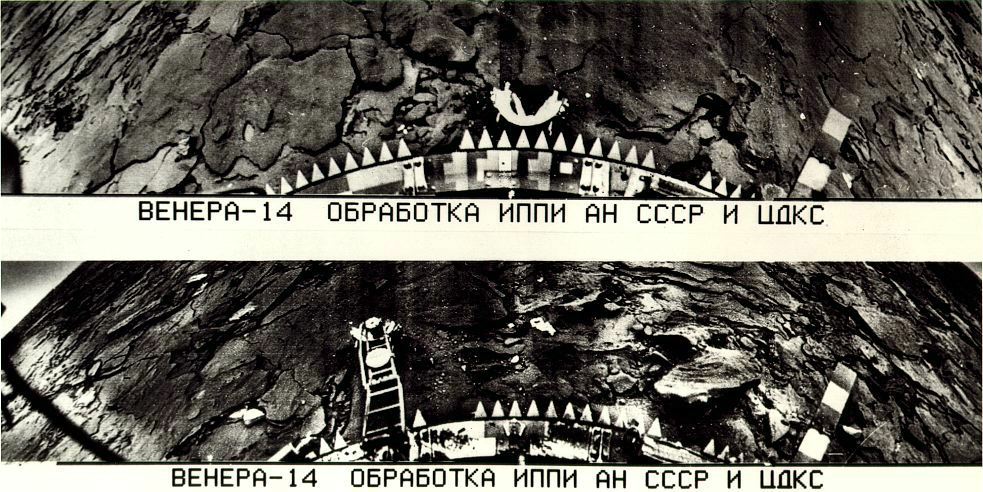
Posted on 11/09/2005 2:13:31 PM PST by nickcarraway
Swiss scientists and firms are closely involved with the "Venus Express", a European space probe which has blasted off from Kazakhstan and is set to orbit Venus.
The probe will investigate the atmosphere and cloud cover of our neighbouring planet in greater detail than ever before.
This is the first time the European Space Agency (ESA) has launched a mission to Venus, which is a mere 42 million kilometres from the Earth and clearly visible with the naked eye at night.
Another fascinating aspect of Venus is that it is roughly the same size as the Earth (95 per cent of the Earth's diameter, 80 per cent of its mass). It is the second nearest planet to the Sun, with the Earth in third position.
Similar but different
In the 1960s, Venus aroused a great deal of interest and the data sent back by American and Russian probes was surprising.
They discovered extreme differences between the climatic conditions on Earth and on Venus, which scientists sought to explain in their quest for a better understanding of the development of the solar system.
The probe was launched on Wednesday at 4.33am Swiss time from a Soyuz-FG carrier rocket at the cosmodrome at Baikonur in Kazakhstan.
The launch was originally planned for October 26 but was postponed for technical reasons.
After 153 days, the Venus Express will begin to orbit Venus and will remain in orbit for 500 terrestrial days, which corresponds to just two Venusian days (one day on Venus equals 243 Earth days).
The cost of this European space mission amounts to about SFr340 million ($260 million). Switzerland's contribution, as one of the seventeen members of the ESA, is SFr12 million.
Swiss connection
Two Swiss firms – FISBA Optik of St Gallen and Contraves Space of Zurich – have been involved in the project, as have Swiss researchers from the Bern University Institute of Physics.
Professor Nick Thomas has worked on the optical components of the Venus Monitoring Camera (VMC), which will be used to study the atmosphere of Venus.
The planet is shrouded in a dense atmosphere, consisting almost exclusively of carbon dioxide, which produces a greenhouse effect generating surface temperatures of almost 500 degrees Celsius.
Professor Thomas is convinced that the camera will provide an excellent view of the planet's upper atmosphere.
The probe will also investigate the absorption of ultraviolet rays, observe the planet's deeper atmospheric layers, look for emissions of water vapour and check for the presence of oxygen.
Surprises
Thomas does not exclude the possibility that these observations will yield "some surprises, such as the presence of active volcanoes".
Professor Peter Wurz, meanwhile, has been responsible for ASPERA-4, an instrument designed to study interactions between the solar wind and the atmosphere of Venus. The erosion of the planet's atmosphere will be the special focus of these studies.
"The fact that space probes are orbiting Venus, which is nearer to the Sun than us, and Mars, which is more distant, at the same time will enable us to compare the processes of atmospheric erosion," explains Wurz in an interview given at the ESA.
"We shall be able to discover how much water and other substances are carried away by atmospheric erosion. And this will enable us to calculate how much material has been lost by each planet over the past 4.6 billion years, since the origins of our solar system."
((((ping))))
Actually, properly defined, a day on Venus (sunrise to sunrise) is about half that length of time. It takes Venus 243 earth days to complete a rotation, but it also takes that roughly that same length of time (moving in the other direction) to complete a circuit around the sun. Putting those data together cuts the number in half.
Neat stuff.
I was surprised to learn that the US and Soviets actually landed probes on Venus, and that one such lander (Soviet, I think) took some photos before melting and burning up.
I'm not so certain. Let's see what Google claims...
There are seven major instruments aboard, each from a different European country. It's been 15 years since a ship was sent to Venus.
Appears the Soviets landed a bunch of times with their Venera program. Didn't see anything on any U.S. landings.
For Venus, the difference between the siderial day the solar day is important.

where is the ESA live video feed?
Disclaimer: Opinions posted on Free Republic are those of the individual posters and do not necessarily represent the opinion of Free Republic or its management. All materials posted herein are protected by copyright law and the exemption for fair use of copyrighted works.